
About Sea Turtles
 An Introduction to the Sea Turtles of the World (.pdf)
An Introduction to the Sea Turtles of the World (.pdf) How to
differentiate the species? Identification Key (.pdf)
Courtesy of the Wider Caribbean Sea Turtle Conservation Network -
http://www.widecast.org)
How to
differentiate the species? Identification Key (.pdf)
Courtesy of the Wider Caribbean Sea Turtle Conservation Network -
http://www.widecast.org) Interactive map of nesting sites in IAC Contracting Parties (.zip)
This aplication requires Flash Player
Interactive map of nesting sites in IAC Contracting Parties (.zip)
This aplication requires Flash Player Sea Turtle Life Cycle (.pdf)
Sea Turtle Life Cycle (.pdf)
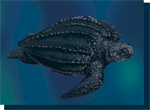  Dermochelys coriacea
(.pdf) Dermochelys coriacea
(.pdf)Common name: leatherback Biology: Lives in pelagic zones and has the widest distribution of all the species of sea turtles. Feeds mainly on jellyfish. It is the largest of the sea turtles; a female can weigh up to 500 kg. Conservation status: Critically endangered (CR A1abd)*  Map of Dermochelys coriacea in the Eastern Pacific
(.pdf) Map of Dermochelys coriacea in the Eastern Pacific
(.pdf) |
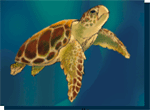  Caretta caretta
(.pdf) Caretta caretta
(.pdf) Common name: Loggerhead Biology: Nests mainly in subtropical zones. Feeds mostly on crustaceans and mollusks. Can weight up to 180 kg. in the western Atlantic. Conservation status: Endangered (EN A1abd)* |
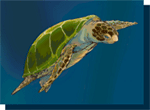  Chelonia mydas
(.pdf) Chelonia mydas
(.pdf)Common name: turtle, white turtle, black turtle Biology: Found in all oceans. Plays and important ecological role in seagrass beds. Can eat algae as well as seagrass. Can weigh up to 230 kg. Conservation status: Endangered (EN A2bd)* |
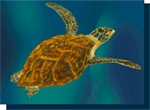  Eretmochelys imbricata
(.pdf) Eretmochelys imbricata
(.pdf)Common name: hawksbill Biology: Lives in coral reef zones, feeds mainly on sponges. Adult females weigh an average of 60 kg. Conservation status: Critically endangered (CR A1bd)* |
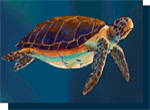  Lepidochelys kempii
(.pdf) Lepidochelys kempii
(.pdf)Common name: Kemp’s ridley Biology: Most of the world population nests at Rancho Nuevo, in the Gulf of Mexico. Feeds mainly on crustaceans and mollusks. Reaches 35-50 kg. Conservation status: Critically endangered (CR A1 ad)* |
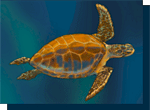  Lepidochelys olivacea
(.pdf) Lepidochelys olivacea
(.pdf)Common name: olive ridley Biology: Lives in pelagic zones. Feeds mainly on crustaceans and mollusks. Reaches 35-50 kg. Conservation status: Vulnerable (VU A2db)* |
* IUCN 2008. 2008 IUCN Red List of Threatened Species. (http://www.iucnredlist.org)




